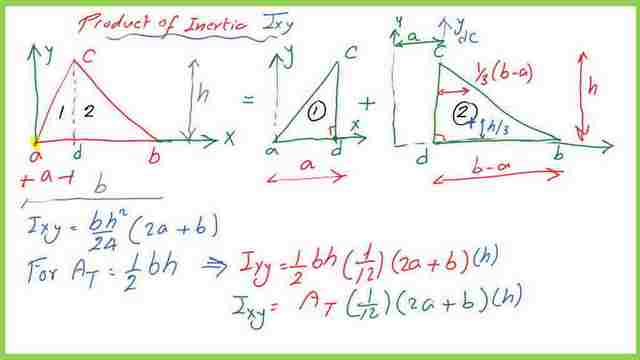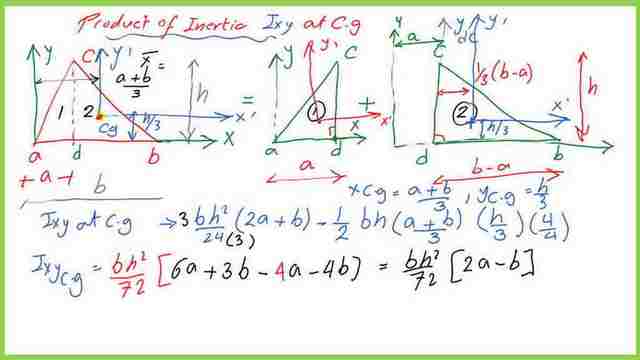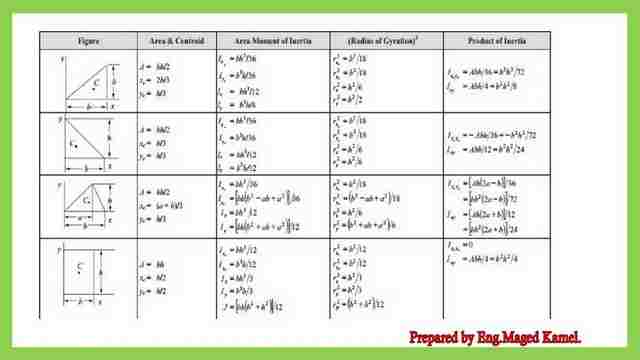Last Updated on June 14, 2025 by Maged kamel
Product Of Inertia Ixy- For the Triangle.
Product of inertia Ixy for the triangle.
We aim to get the product of inertia Ixy for the triangle at the intersection between axis x and axis y at point a.
We will use the previous data for the product of inertia obtained from the previous posts for both case 1 and case 2.
1-Since the triangle ABC consists of two triangles ACD and dbc, then our Ixy for the triangle =Ixy1, exactly as estimated from case-2, but for case 1, the value for Ixy to be adjusted since it is estimated at the ydc.
The adjustment is done by taking Ixy value at the CG of the triangle cdb and adding a new value for Ixy from the CG to the new y-axis at Point a. The value is estimated as the triangular Area of the case-1*x1^2 to be added. x1 is the Cg distance to Y-axis. xcg =(1/3*(a+b)), the y- cg =h/3. The matching items should be cleared, and the product of inertia Ixy estimation in detail is shown in the next slides.
Omit(+ 3a^2) with the (-3a^2), and proceed to the calculation for the product of inertia Ixy for the triangle.
The value of Ixy in terms of the total area.
If we wish to express the Ixy for the triangle in terms of the area of the triangle, we call it At, we can substitute for At as=0.50*b*h or half the base by the height. The final value of the product of inertia Ixy at the edge point- a where the x-axis and y-axis intersects.
Rewrite the Ixy as AT*(1/12)*(2a+b)*h. The At is the area of the triangle.
The value of Ixy for the triangle at the Cg.
The Cg of the triangle is located at x distance=1/3*(a+b), while y distance=h/3. These values are from Cg to the vertical axis Y at a and from the x-axis at the base of the triangle.
The final value of Ixy at the Cg is to be obtained by using the parallel axes theorem, and subtracting the product of the triangle area*xcg*ycg)
The final value of Ixy at the CG after subtracting (A*x-bar*y-bar). This is the final value of the product of inertia at the Cg which equals b*h^2(2a-b)/72.
This is the list of inertia for triangular shapes quoted from the NCEES tables of inertia.
This is the pdf file used in the illustration of this post.
For an external resource, the definition of the moment of inertia with solved problems, 2nd moment of inertia.
For the next post, 16-Polar Moment of inertia– for the triangle.





